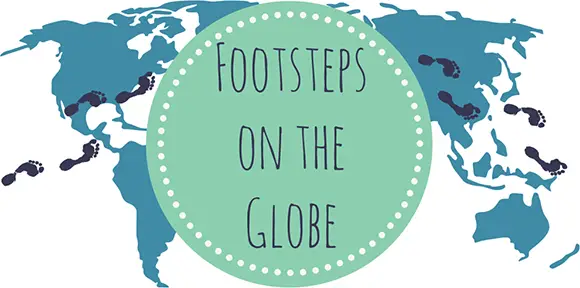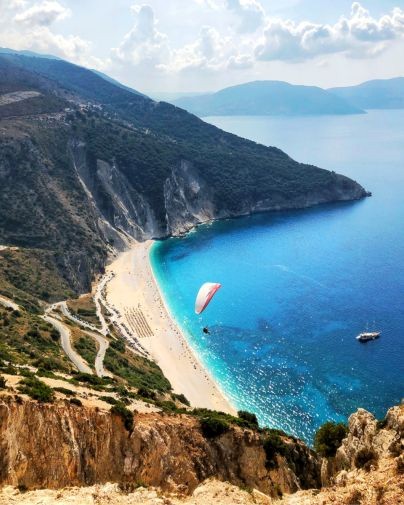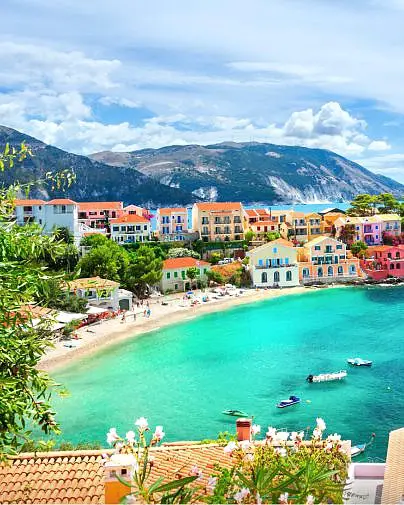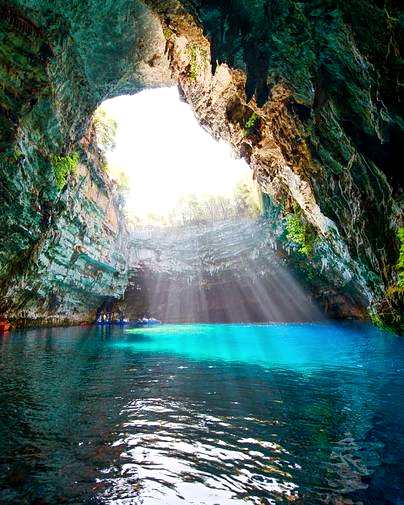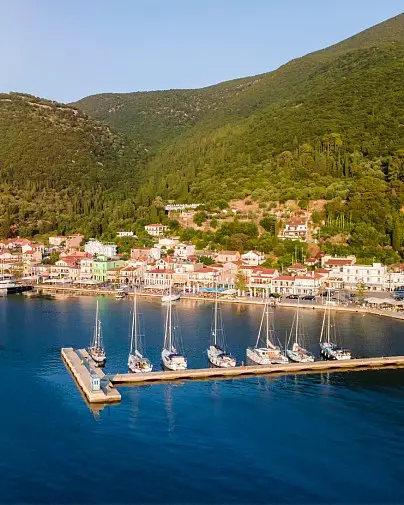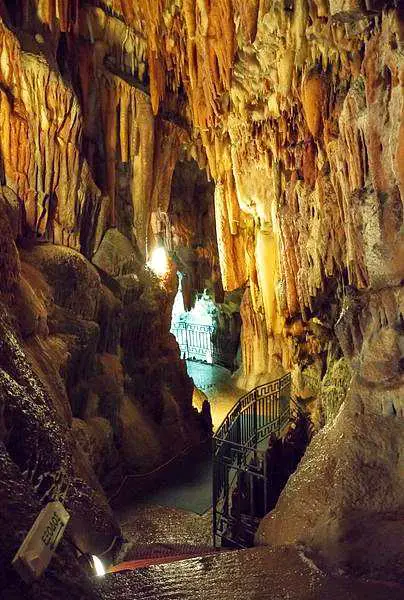Where to see wild turtles in Kefalonia (+ top 10 facts!)
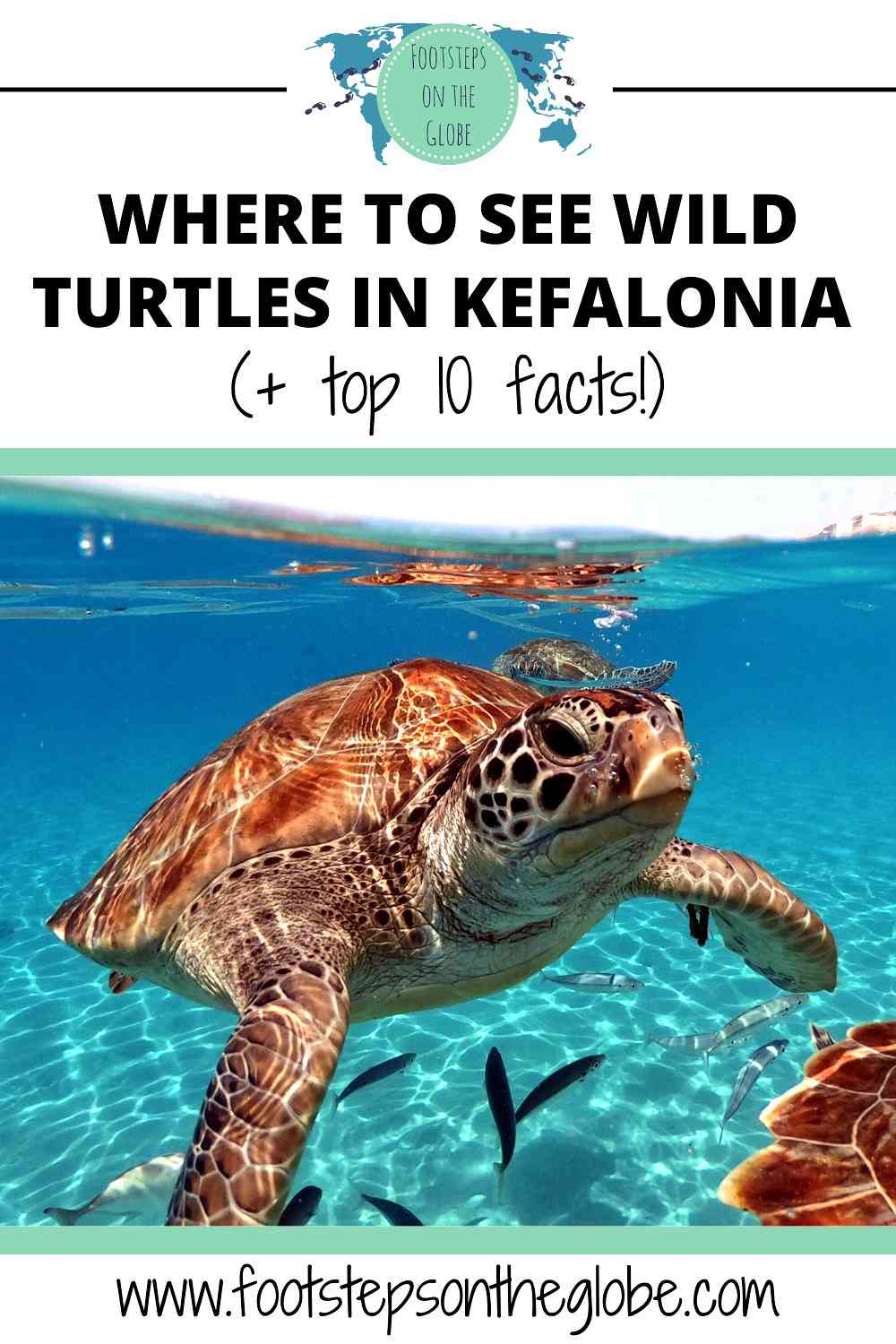
Where to see wild turtles in Kefalonia (+ top 10 facts!)
For more than 150 million years, sea turtles have been travelling the world’s oceans. They’re so old in fact that their ancestors were around at the time of the dinosaurs! It’s hard to believe that these beautiful creatures have graced the planet for so long. But even harder to believe that you could find them brushing past your feet whilst on holiday in Kefalonia! Here’s where to see wild turtles in Kefalonia, plus top 10 fun facts about these adorable mariners.
OTHER KEFALONIA POSTS YOU MAY LIKE…
- Top 10 things to do in Kefalonia, Greece (the perfect 2023 holiday destination)
- DROGARATI CAVE: Everything you need to know before you go!
- MELISSANI CAVE: Everything you need to know about the cave of nymphs!
What kind of turtles are there in Kefalonia?
Kefalonia is home to two out of the seven sea turtle species found in our oceans: Loggerhead Turtles that nest and forage on the island’s south coast and Green Turtles that forage the island’s sea grass meadows.
Loggerhead Turtles are the most dominant, however as they’re the only turtles in Kefalonia that nest here – most likely on the very beach they themselves were hatched on!
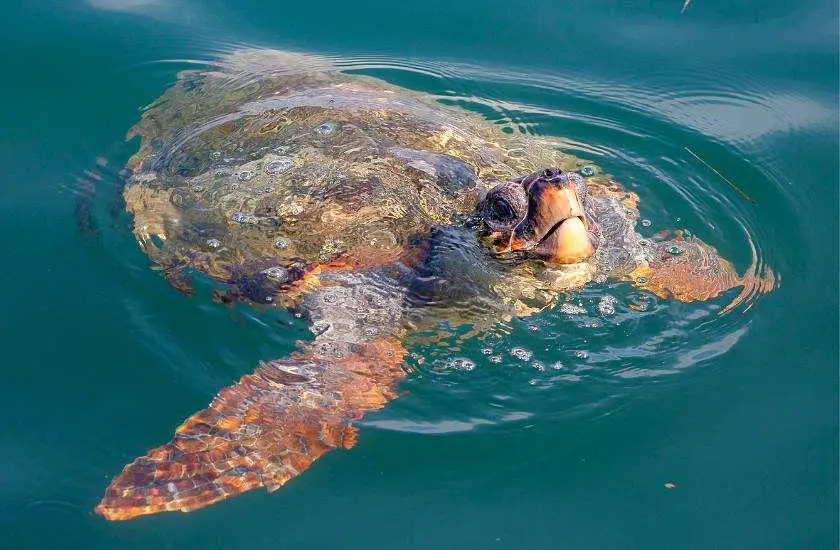
where and when can you see turtles in Kefalonia?
The most common and accessible place to see wild turtles in Kefalonia is Argostoli Bay.
Loggerhead Turtles feed here every morning in the shallows. Munching on mussels attached to the dock and waiting for fishermen to throw away any fish into the harbour that they can’t sell.
In terms of the time of day, turtles can be found patrolling Argostoli Bay every morning, roughly between 9am and 11am.
Although it’s never a sure thing of course. Being wild turtles, they’ll swim over to have their breakfast when they’re good and ready! But it’s highly unlikely you won’t see at least one turtle at this time.
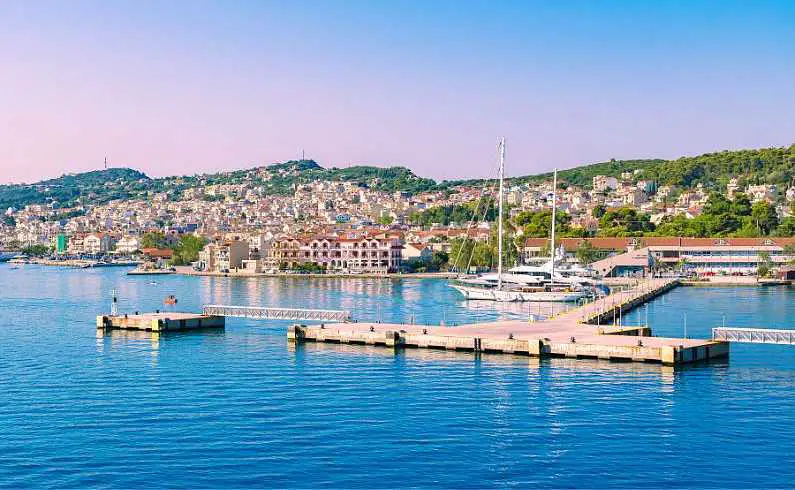
What time of year can you see turtles in Kefalonia?
Loggerhead Turtles migrate to Kefalonia every spring where they forage for food, mate and then nest. So if you are visiting the island during the spring or summer time, you’ll have a pretty good chance of getting to see one!
From late May to early August you’ll see females come ashore on beaches such as Kaminia, Mounda, Megas Lakos and Kounopetra to lay their eggs. From July to October you can watch the newborn hatchlings digging out of their nests.
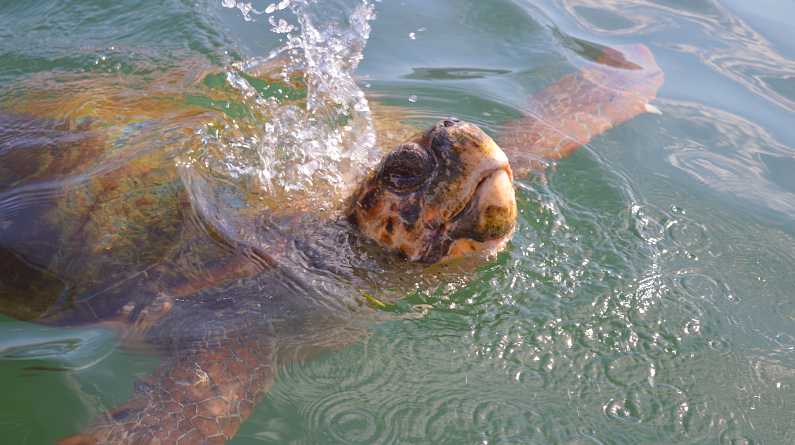
How did you find out where to see wild turtles in Kefalonia?
Being able to see wild turtles was an unexpected treat when I visited Kefalonia. It was only through word of mouth (and eavesdropping on a fellow guest at our hotel reception!) that I had even found out about them.
It’s THAT rare to see wild sea creatures in their natural habitat!
After talking to locals about the details, we found out where we needed to be to see the turtles and when the best time to catch them was.
My nosiness certainly paid off on this trip because seeing wild turtles in Kefalonia was a once-in-a-lifetime experience!
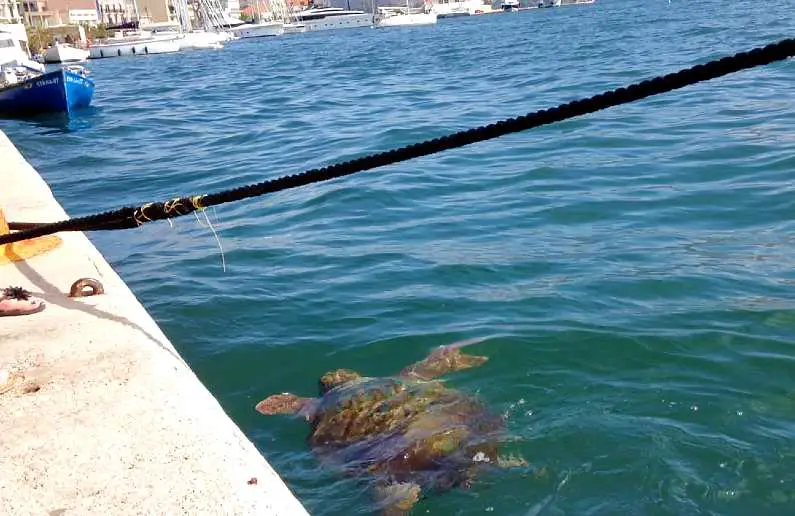
What is it like to see turtles in the wild?
I was absolutely mesmerised watching the turtles swim up and down the bay! They glide through the water so gently. I could have stood around watching them all day, just bobbing on the surface, having some brekkie!
They come so close that you can see every detail of the intricate patterns on their beautiful shells and flippers. They’re absolutely stunning creatures.
It was wonderful to see how locals responded to them as well. Fishermen threw fish overboard for them and seemed to have a real affection for them. They just see them as an extended part of island life – their little mates!
You could also tell by the way people reacted to the turtles at the harbour that they had a phenomenal impact on everyone that saw them.
Everyone was just in silent awe of the incredibly special creatures they are.
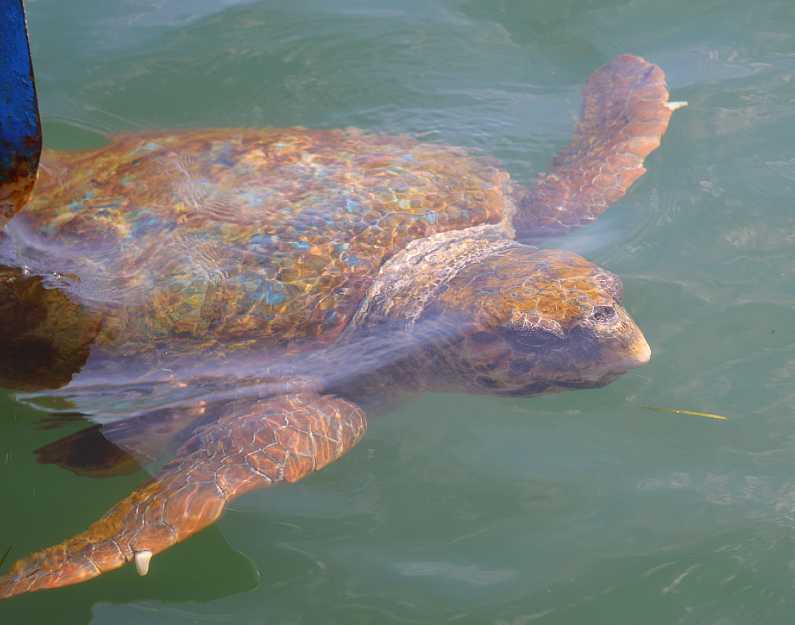
Can you swim with turtles in Kefalonia?
I wouldn’t recommend jumping in the harbour to get closer to them, no! But the turtles patrol right up to the edge of the harbour, so you’ll literally be about a foot away from them! They’re very chilled too.
Having said this, you never know if you’ll see a turtle whilst swimming in Kefalonia. Especially if they’re foraging for food nearby.
Just keep a safe distance from them and make sure not to disturb or frighten them by swimming too close.
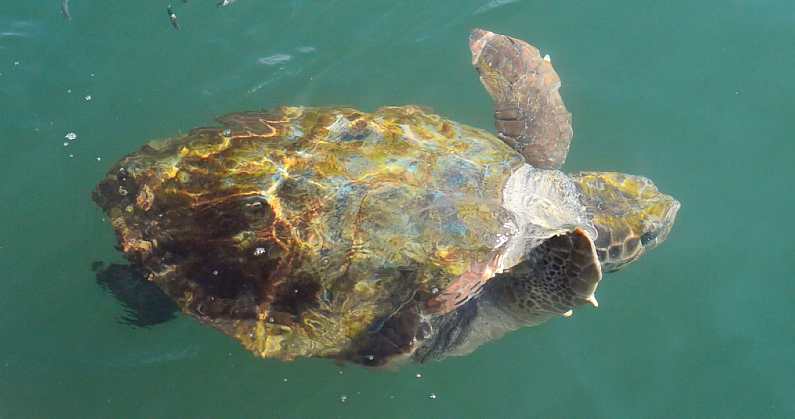
Are the turtles in Kefalonia endangered?
Loggerhead Turtles are on the Endangered Species List as ‘vulnerable’. One of the main reasons for this is humans hunting them for their shells and flippers.
In some parts of the world these still fetch a high price despite laws being put in place to prevent them from being sold.
As well as humans being a threat, their nests are often destroyed by other predators like raccoons and wild pigs.
They’re also hunted by reef fish and sharks in the water, which has a huge impact on their numbers and chances to reproduce.
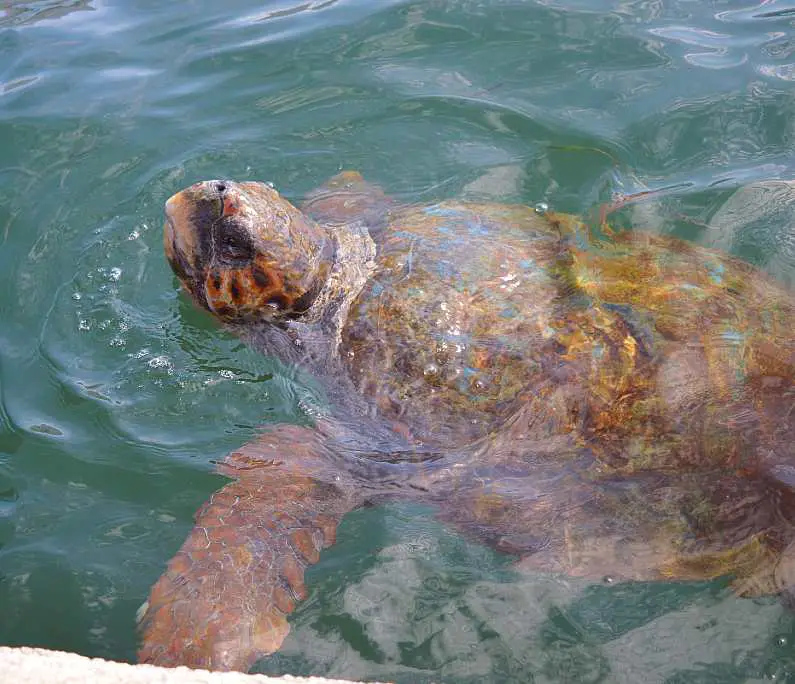
Are there any conservation projects for turtles in Kefalonia?
There is indeed! Wildlife Sense is a research and conservation organisation on a mission to protect endangered sea turtles in their natural habitat.
They operate a science-based research and conservation project in collaboration with local and national authorities.
They also offer a unique learning experience to the volunteers who join their efforts, and promote public awareness.
Make sure to check them out whilst you’re visiting Kefalonia!
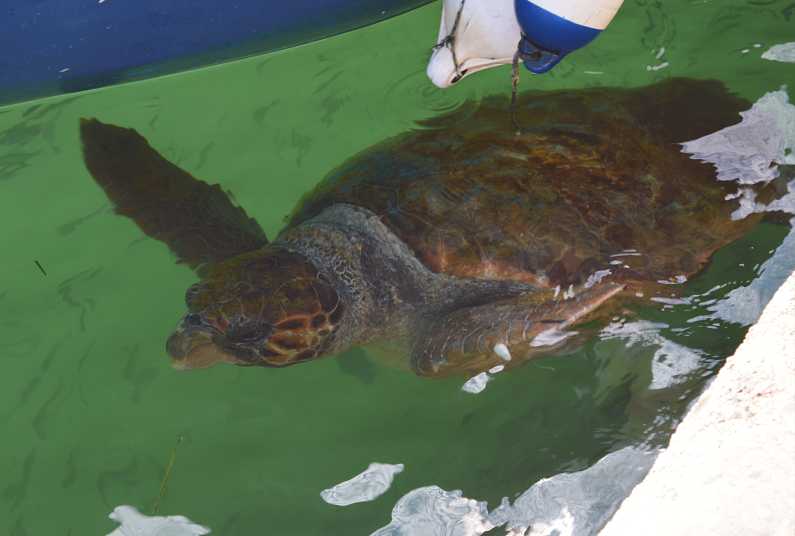
Top 10 fun facts about Loggerhead Turtles
1) The first sea turtles were on Earth nearly 150 million years ago – making them one of the oldest surviving reptiles on the planet!
2) The Loggerhead Turtle is named for its exceptionally large head and strong jaw (rude or just practically named? I’ll let you decide! 😂).
3) It’s not just the Greek islands you’ll find Loggerhead Turtles. Their enormous range encompasses all but the colder waters of the world’s oceans. They seem to prefer coastal habitats but will travel hundreds of miles out into the open ocean.
4) The sex of hatchlings is determined by the temperature of the sand. Cooler temperatures produce males and warmer temperatures produce females.
5) On average Loggerhead Turtles live between 47 and 67 years old. However, ‘Big Berth’ was the oldest documented wild nesting Loggerhead Turtle – estimated to be 85 to 91 years old!
6) Adults weigh anything between 155 to 375 pounds!
7) The Loggerhead Turtle’s smooth shell and paddle-like flippers help them speed through the water as fast as 15 miles per hour.
8) They can dive for a duration of 30 to 40 minutes. During nesting and foraging, Loggerhead Turtles will dive for 95% of their days.
9) Hatchlings are omnivores, meaning they eat both animals and plants, but adults are carnivores, favouring crabs, whelks, and conchs.
10) The sign for turtle in British Sign Language is completely representative of the animal itself. It’s also the cutest thing! Have a go yourself:
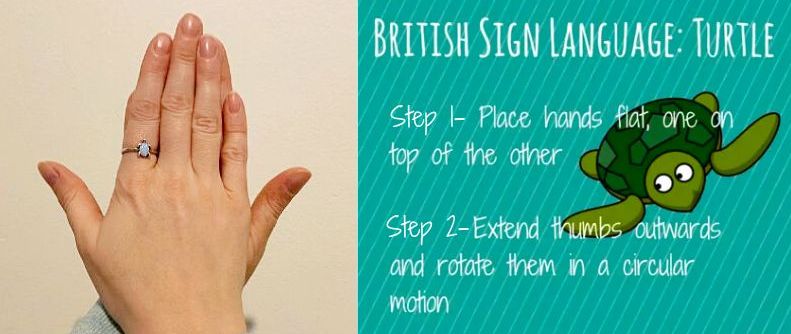
OTHER KEFALONIA POSTS YOU MAY LIKE…
- Top 10 things to do in Kefalonia, Greece (the perfect 2023 holiday destination)
- DROGARATI CAVE: Everything you need to know before you go!
- MELISSANI CAVE: Everything you need to know about the cave of nymphs!
Have you ever seen turtles in the wild before or had any encounters like this? 😊

